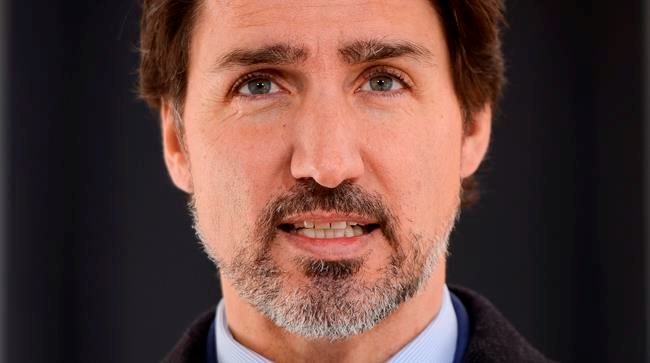OTTAWA — Federal projections of the toll COVID-19 could take in Canada are not yet ready for public consumption but will be coming soon, Prime Minister Justin Trudeau said Thursday, just as Ontario announced it will be able to provide details of its provincial analysis on Friday.
Canadian officials have acknowledged they are working on models for how the virus is impacting Canada and what may yet happen, but have refused thus far to make that information public. Trudeau said Thursday he understands how much Canadians want to get a better sense of where COVID-19 is going to take us, but said the data is just not ready yet.
"I know a lot of people are still wondering when this will get better or how much worse it might become," he said, in his daily briefing to Canadians outside his Ottawa home.
"You want to see the numbers and predictions. You want to plan. You want to prepare for the worst, you want to know what to be hopeful about. I know, and we will have more information ... soon."
Trudeau spoke Thursday evening for more than two hours with premiers by teleconference, where data sharing and co-ordination and projections were critical items on the agenda.
Prior to the call, he said in recent days provinces have been clearing a backlog of testing data which is providing more information that is helpful to guiding the projections.
"It's giving us more accurate images on how COVID-19 is spreading, on where it's spreading, on how it's being transmitted and on how the measures that we're putting into place are working," he said.
"I'll be speaking tonight with premiers about this data, about the modelling and analysis that's going on and we look forward to being able to share more information soon."
Trudeau stressed again that the number 1 factor that can influence the outcome for Canadians of COVID-19 is their own choice to listen to the experts and stay home unless it's absolutely essential to go out. When they do, he said, they must make sure they keep a distance of at least two metres from anyone they're not currently living with.
Quebec Premier Francois Legault signalled Wednesday that Quebec modelling is coming shortly. Ontario Premier Doug Ford is the first to put a firm date on it, promising in his Thursday press conference that Ontario's predictions will be released to the public on Friday.
"You deserve to see what I see," Ford said.
He cautioned that "many people will find it hard to hear" what the data is going to show.
There are more than 11,000 positive cases of COVID-19 in Canada, but Dr. Theresa Tam, Canada's chief public health officer, frequently reminds Canadians that the number of positive tests does not provide the full picture of how many people have COVID-19.
She also repeated Thursday that there is a delay between when people come into contact with the virus and when a test comes back positive. It generally takes five to six days after exposure to begin to show symptoms, and several days for test results to come back, if a test is actually done.
As of Thursday morning, 111 deaths can be attributed to COVID-19 in Canada, Tam said.
Globally, the death count due to the novel coronavirus passed 50,000 Thursday and the number of confirmed infections is nearing the one-million mark.
Health Minister Patty Hajdu said March 11 that between 30 and 70 per cent of Canadians could be infected with COVID-19 but that was before the caseload in Canada began to soar. It was also two days before the biggest provinces began closing schools and tightening restrictions on public gatherings.
Several other countries have released predictions for death counts and infection rates this week, including New Zealand, which has a population of nearly five million. That country said Thursday almost two in three people might contract COVID-19, and 14,000 to 18,000 people could die from it. A separate report said if the virus was left unchecked it would infect 89 per cent of the population and kill as many as 80,000, or 1.6 per cent of the entire population.
Infectious disease experts in the United States said Tuesday COVID-19 could kill between 100,000 and 240,000 Americans, even with all the shelter-in-place orders and attempts at physical distancing. Their data also suggested about one-quarter of people who contract COVID-19 may not show any symptoms at all, making the spread of the virus easier since only people with symptoms are urged to go into quarantine.
The Americans said without the physical distancing measures in place, the death toll will be much higher.
This report by The Canadian Press was first published April 2, 2020.
Mia Rabson, The Canadian Press



